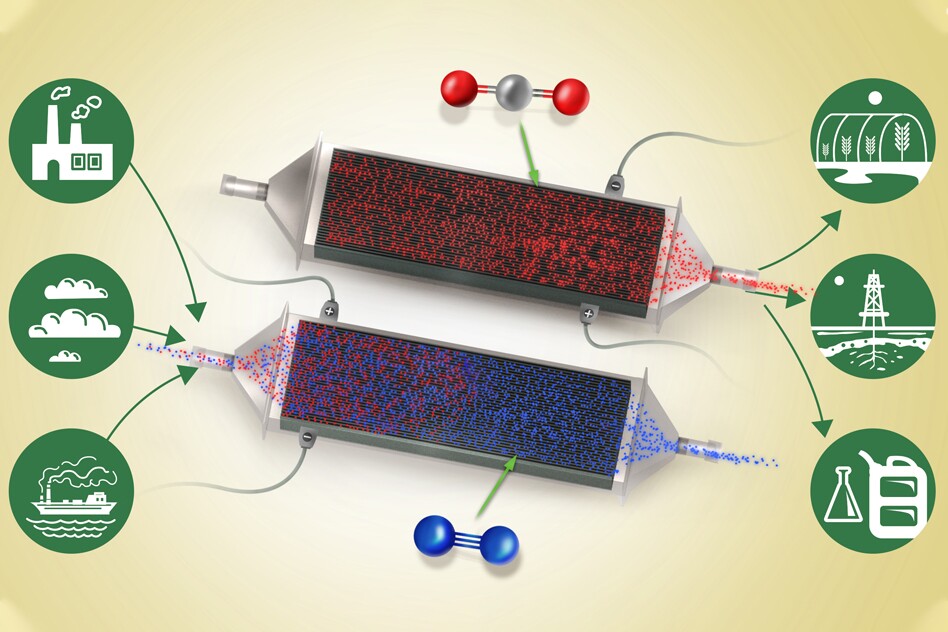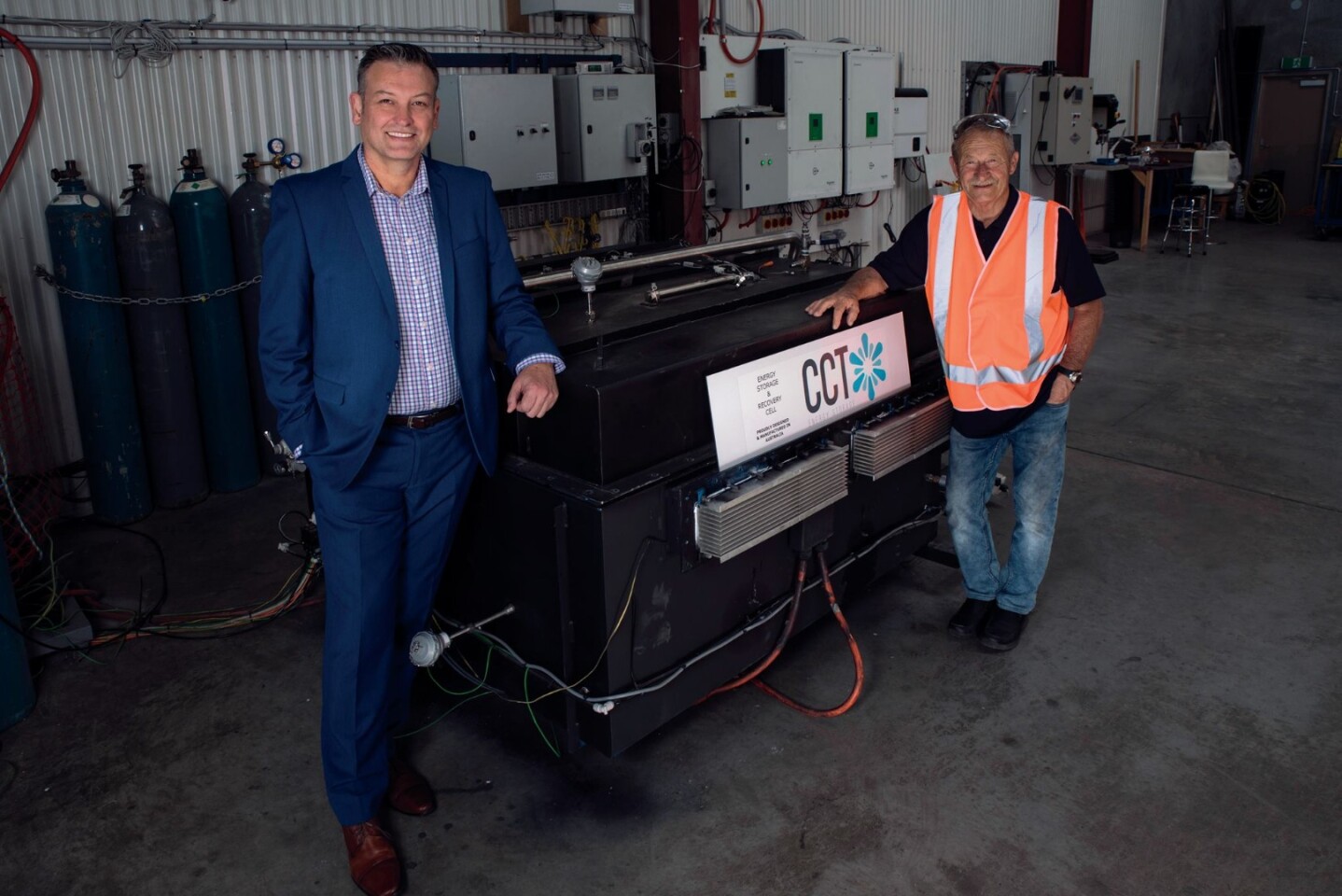
Posted on 12/09/2019 11:11:00 AM PST by Red Badger
2019 provided us with a number of battery breakthroughs that could change how we power our grids, our devices and also our modes of transport SergeyNivens/Depositphotos View 7 Images
Many corners of society stand to gain from advances in battery technology, from automakers, to manufacturers of consumer electronics to all that care about the environment. This year offered a little something for everybody with an interest in this area of science, bringing us tech that could charge electric vehicles in 10 minutes, batteries that suck carbon dioxide out of the air and news that the world’s biggest battery is set to get even bigger. Here are the most significant battery breakthroughs of 2019.
When charging temperatures go extreme:

Penn State's new fast-charging battery is designed to heat up 140° F (60° C) for just 10 minutes, and then be quickly cooled to ambient temperatures. Chao-Yang Wang/Penn State
==================================================================
Ideally, the lithium-ion batteries that power our mobile devices and today’s electric vehicles stay within a certain temperature range when charging, otherwise they run the risk of degrading and suffering a far shorter lifespan. But there is plenty to be gained by charging them at higher temperatures if we can do so safely, namely a greater efficiency and therefore potentially far shorter plug-in times.
In October, a team of Penn State University researchers demonstrated a new kind of battery built to take the heat. Charging a battery at around 60° C (140° F) would normally be considered “forbidden,” by scientists, but the researchers’ device hits these temperatures in just 10 minutes and then rapidly cools before the deleterious effects can take hold.
The breakthrough centered on a thin nickel foil, which the scientists attached to the battery’s negative terminal to enable it to quickly warm as the electrons flowed through it, before rapidly cooling again. This approach saw the team safely charge the battery at these temperatures across 1,700 cycles. It did so with such great efficiency, the scientists say it was equal to charging an electric vehicle for a 200- to 300-mile range (320 to 480 km) in just 10 minutes.
==================================================================
Battery charging with a side of CO2

A diagram detailing the new device from MIT. Air or flue gas can be pumped into the device (bottom), which captures carbon dioxide (red) from it, leaving only fresh air (blue) to come out. When the device is full, it can be flushed out and captured as pure CO2 for industrial use. MIT
==================================================================
In October, a team of MIT researchers demonstrated a new type of battery with the ability to collect carbon dioxide from ambient air. Described as an electro-swing battery, the device uses a stack of electrodes coated in a compound called polyanthraquinone, giving them an ability to suck up molecules of CO2 that just happen to be nearby.
This process takes place naturally as the battery is charging, up until the electrodes are full of CO2. At this point it can be discharged to release the CO2 molecules for collection and use as an industrial product. The team says that testing in the lab showed its electro-swing battery could last for 7,000 charging cycles with a 30 percent drop in efficiency. It has now set its sights on a range of 20,000 to 50,000 cycles.
====================================================================
Carbon dioxide battery goes fully rechargeable

A breakthrough in battery chemistry at the University of Illinois at Chicago could lead to greener energy storage devices. RealVector/Depositphotos
==============================================================
The search for new and improved battery designs involves exploring the potential of new ingredients, and one scientists have been exploring for a while is carbon dioxide. Lithium-carbon dioxide batteries promise an energy density more than seven times greater than a lithium-ion battery, but developing a version that can be recharged over and over has proved difficult so far.
This is because of an unwanted buildup of carbon on the battery’s catalyst during charging. In September, scientists at the University of Illinois at Chicago (UIC) reported a way around this problem, demonstrating what they billed as the first lithium-carbon dioxide battery capable of full rechargeability.
The battery makes use of “nanoflakes” of molybdenum disulfid built into the cathode, along with a hybrid electrolyte consisting of ionic liquid and dimethyl sulfoxide. This combination of materials prevents the troublesome accumulation of carbon on the catalyst, and enabled the battery to be recharged across 500 consecutive cycles.
=================================================================
Grid-level energy storage with a heart of molten silicon
 CCT SEO Serge Bondarenko (left) and COO Graham Warburton (right) with the Thermal Energy Device (TED)CCT Energy Storage
CCT SEO Serge Bondarenko (left) and COO Graham Warburton (right) with the Thermal Energy Device (TED)CCT Energy Storage
=================================================================
Renewable sources like wind and solar can generate plenty of power, but it is storing that power for later use during peak load times that can be tricky. Back in April, Australian startup Climate Change Technologies (CCT) introduced what it sees as a solution, and a more effective one than standard lithium-ion-powered grid storage options.
Its Thermal Energy Device (TED) is billed as the world's first working thermal battery. It is a modular battery that can be fed electricity from any source and use it to melt silicon inside an insulated chamber. A heat engine can then withdraw this energy for use as required, with each TED box able to store 1.2 MWh, while the individual units can be hooked up to create a battery of potentially unlimited size.
One of the big advantages of the system, according to CCT, is that molten silicon doesn't degrade like lithium does. In testing, the company says its battery showed no signs of degradation over 3,000 test cycles and it expects them to last for 20 years or more. That long life aside, the TED batteries are claimed to be capable of storing six times more energy than lithium-ion batteries per volume, for around 60 to 80 percent of the price.
===============================================================
Doubling the density with off-the-shelf components

The new technology has the potential to improve both the energy density and safety of lithium-ion batteries Destinacigdem/Depositphotos
=================================================================
Lithium-ion batteries can carry enough energy to keep your mobile phone on for the day or power your laptop through a stint at the cafe, but have limitations when used for transport. This is because the energy density of the batteries built into cars and aircraft pales in comparison to traditional fuel sources, meaning you can't increase the range without making them prohibitively heavy.
A promising pathway forward emerged via the Institute for Frontier Materials at Australia's Deakin University last month, where scientists demonstrated a new kind of battery featuring a solid electrolyte made from commercially available polymers. This constituted "the first clear and useful example of liquid-free and efficient transportation of lithium-ion in the scientific community," according to those involved.
By eschewing the volatile liquid electrolyte that is prone to catching fire, the battery should be a lot safer, but its potential doesn't end there. The researchers say this type of design will also finally allow for the use of a lithium metal anode that could double the density of lithium batteries. This could lead to electric cars with far greater ranges and electric aircraft that travel meaningful distances.
==============================================================
Go big, go home, and go bigger again

The world's biggest battery is set to grow by 50 percent next year. Hornsdale Power Reserve
=============================================================
In 2017, Tesla won a contract to build what would become the world's biggest lithium-ion battery, offering the state of South Australia an extra 129 MWh of storage capacity with an output of up to 100 MW.
Now it is returning Down Under to expand on this in no small way. Neoen and the South Australia government have entered another agreement with Tesla to add a further 64.5 MWh of capacity and 50 MW of output, increasing the size of the world's biggest battery by around 50 percent. The upgrade is planned for mid-2020.
===============================================================
Nick Lavars
Nick has been writing and editing at New Atlas for over six years, where he has covered everything from distant space probes to self-driving cars to oddball animal science. He previously spent time at The Conversation, Mashable and The Santiago Times, earning a Masters degree in communications from Melbourne’s RMIT University along the way.
This is all great and geekified news, however, with all these great advancements comes one question that has come up every December since the advent of the transistor radio... how many batteries, that are not included, and why do they (aa, aaa, 9v), sstill go up on price if they are old technology??
It’s a conspiracy.........................
John Goodenough just made a new discovery that revolutionizes batteries for real.
He’s the 97 year old guy who invented the lithium ion battery as well as RAM (Random Access Memory).
https://en.wikipedia.org/wiki/John_B._Goodenough
Molten silicon? What could go wrong.
Molten silicon is not explosive or particularly flammable. Its a metaloid that when exposed to air will oxidize back to the silicon teraoxide that was the original source of the silicon. SIO4 is commonly referred to as quartz sand one of the most abundant and chemically stable compounds on earth. This is all hyperbole as the system is sealed and only the heat is used across sealed heat exchangers. People deal with large quantities of much more reactive molten metals every day all over the world on a scale of hundreds of millions of tons per year mainly aluminum, magnesium, sodium, lithium all those metals are produced as molten in multiple tons per run quantities. Humans mastered dealing with molten metals in the bronze age before Christ was born.
Info on Vanadium Redox Batteries. Grid scale batteries. I am sure there are problems.
https://www.youtube.com/watch?v=UUqOnfceUAA
“Flow batteries are getting my attention. We recently covered residential flow batteries making a big move across Australia. The company, Redflow, saw their first piece of hardware built in their new Thai factory in the past two weeks.
Right now, it seems tech savvy people always bring up flow batteries when talking about large-scale grid applications. No degradation over 20 years is a pretty impressive feat from the perspective of an electricity utility or a financial analyst. 15,000 cycles – one per day – would be 41 years of usage. And from what I’ve read, you can repair the pieces that break.
I’ve also read that vanadium flow batteries already cost well below $500/kWh – and that some hope to see $150/kWh by 2020. That’s a competitive product. And if utilities like it better because it scales easier and has a longer lifetime, renewables will benefit.”
Oh I am well aware of the properties of silicon. Spent 20 years in semiconductor processing. My concern is the use of this technology outside of a controlled environment by untrained or unaware persons. Your examples are all processes that take place in controlled environment(s). I think you would agree that improper of inadvertent handling of this “battery” could get people seriously injured.
I witnessed two events where polysilicon was released into the human space while it was in a vapor form in an explosion from leaking process gases. The toll on the operator in one case was life changing.
Machines fail - people get hurt. The cutting edge often does.
Disclaimer: Opinions posted on Free Republic are those of the individual posters and do not necessarily represent the opinion of Free Republic or its management. All materials posted herein are protected by copyright law and the exemption for fair use of copyrighted works.